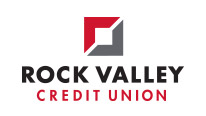Student Loan Repayments: Four Steps to Take Now
All good things must come to an end - and that applies to the upcoming end of federal student loan payment relief measures, which paused federal student loan debt collection and reduced interest rates on federal student loans to 0%.
For those with government-held loans, the relief options provided a record-long "breather.” Now it's time to take steps after the relief programs end. We’ve teamed up with our friends at GreenPath, a nonprofit financial counseling service, to equip you with steps to take while tackling your student loans.
STEP 1: Know What You Owe
Out of sight, out of mind. Don’t be afraid to dive back into the details of your student loans. As a first step, take the time to document how much you owe and who to contact about student loan balances.
To get current loan balances, log onto the Federal Student Aid website. The portal will display how much you borrowed, the type of loan and interest rate, payment history, and the current loan servicer for each loan.
For private student loan information, jog your memory with your credit report, which tracks current and past credit obligations, including student loans.
AnnualCreditReport.com provides borrowers with a free report from the three main reporting agencies: Equifax, Experian, and TransUnion.
These resources are also useful to track current loan servicers (the organizations that handle payment and administration of your debt).
STEP 2: Track Your Interest Rates
Student loan interest rates vary depending on the loan type and other terms such as the date the funds were first disbursed to you. Again, studentaid.gov is the go-to resource to discover the interest rates of your federal student loans. To track interest rates on private student debt, contact each lender for fixed and variable interest rates.
STEP 3: Look at Affordability of Payments
After a lengthy payment pause, consider overall affordability. Based on your current monthly income and expenses, you might find that resuming payments for federal student loans will stress your budget.
Explore options to lower monthly payments by switching to an income-driven repayment plan.
Private student loan lenders typically don’t offer income-driven plans, but they might offer alternative repayment plans on a case-by-case basis.
Loan forgiveness still might be an option. Teachers, nurses, first responders, servicemembers, those working in non-profit hospitals and other non-profit and public service sectors can potentially have their student loans forgiven.
To explore whether you can take advantage of the changes to the public service loan forgiveness program, visit: StudentAid.gov/PSLF/.
Step 4: Consolidate Your Loans
Again, if affordability is an issue, consolidating your student loans sets you up with a single monthly payment. For most borrowers, consolidation lengthens the repayment period. So, your cost of borrowing will actually be higher since you will likely pay more interest over time.
This option will depend on your specific financial picture, so be sure to research all the pros and cons of loan consolidation.
Want individualized help? We are here for it!
Personal, private, one- on-one help is a click or phone call away. Connect with a Rock Valley Credit Union’s Certified Financial Coaches or a Greenpath expert to explore your options and help you get you started.

